Which GPUs Support Ray Tracing?
If you’re an avid gamer, you’ve likely heard the term «ray-tracing» somewhere on the internet or in advertisements. Since the launch of NVIDIA’s first-generation RTX GPUs, the term has become increasingly common. However, AMD has also launched a lineup of GPUs that support ray-tracing.
But are AMD’s GPUs at par or better than NVIDIA’s RTX GPUs? Read on to find out.
What Is Ray Tracing?
Traditionally, video games are rendered using a process called rasterization. Without going into too much detail, in this process, video game scenes are rendered using polygons. Then, a shader adds effects such as colors and lighting to each pixel. Sometimes, this causes inaccurate lighting effects and makes players lose immersion.
Ray Tracing eliminates this issue.
Scenes rendered using ray tracing are more realistic as light, shadows, and reflections work how they would in real life. This is because Ray Tracing uses a virtual light source, and all objects in the scene interact with the light source, resulting in much higher graphical fidelity than rasterization.
While this is just a general overview of ray tracing, there is plenty more to learn about ray tracing and how it works.
NVIDIA vs. AMD: How Does Ray Tracing Work?
Both NVIDIA and AMD offer GPUs that support ray tracing, and how they work is also quite similar. However, there is one key difference.
NVIDIA has a dedicated set of hardware cores, called RT cores, that handle real-time ray tracing in video games. On the other hand, AMD GPUs handle ray tracing using hardware cores that also perform other functions at the same time. AMD refers to these cores as Ray Accelerators.
Related: Nvidia RTX 3080 vs. AMD RX 6800 XT: Should You Upgrade Your Gaming PC?
Additionally, NVIDIA also offers consumers some extra features such as Deep Learning Super Sampling (DLSS), to which AMD yet doesn’t have a direct competitor. All in all, NVIDIA’s implementation of ray tracing is a good mix of capable hardware, optimization, and a software suite that lets you take advantage of the GeForce RTX GPUs.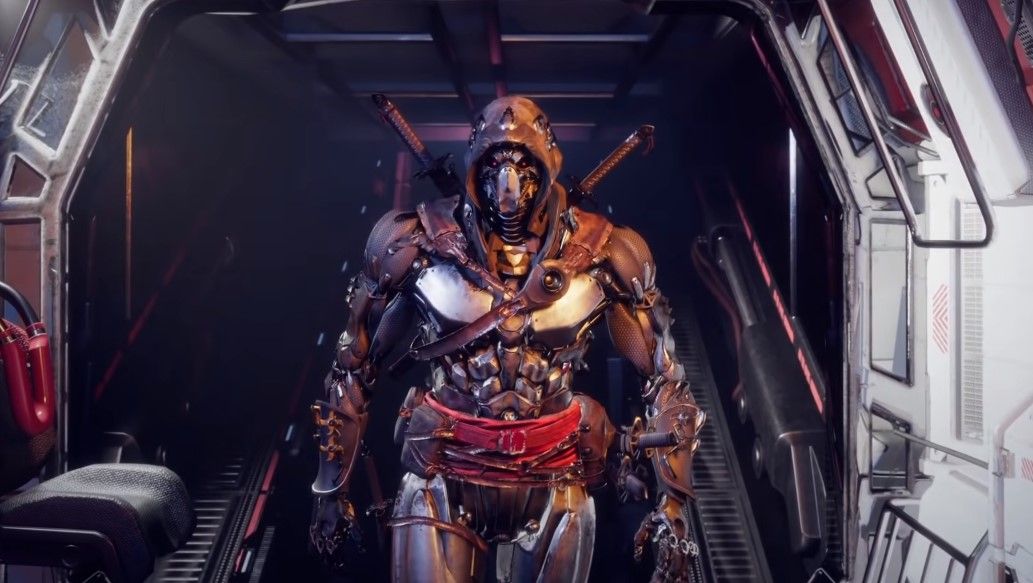
AMD hasn’t had time to perfect their ray tracing compatible GPUs since they’re still in their first generation. However, the brand does have quite a lot lined up for release, including an answer to DLSS.
NVIDIA vs. AMD: The GPUs That Support Ray Tracing
As mentioned earlier, NVIDIA is in its second generation of ray tracing enabled GPUs, whereas AMD Radeon 6000 series of GPUs are the brand’s first attempt at implementing the same. Naturally, NVIDIA has a lot more offerings available across all budgets when it comes to RT-enabled graphics cards.
Here are all the NVIDIA GPUs that support hardware-level ray tracing:
| NVIDIA GPUs With Ray Tracing Support | |
| NVIDIA RTX 20-Series | NVIDIA RTX 30-Series |
| NVIDIA GeForce RTX 2060 | NVIDIA GeForce RTX 3060 |
| NVIDIA GeForce RTX 2060 SUPER | NVIDIA GeForce RTX 3060 Ti |
| NVIDIA GeForce RTX 2070 | NVIDIA GeForce RTX 3070 |
| NVIDIA GeForce RTX 2070 SUPER | NVIDIA GeForce RTX 3070 Ti |
| NVIDIA GeForce RTX 2080 | NVIDIA GeForce RTX 3080 |
| NVIDIA GeForce RTX 2080 SUPER | NVIDIA GeForce RTX 3080 Ti |
| NVIDIA GeForce RTX 2080 Ti | NVIDIA GeForce RTX 3090 |
While the above NVIDIA GPUs support hardware-level ray tracing, several older NVIDIA GPUs such as the GeForce GTX 1600 Ti support software-level ray tracing. However, the quality and extent of ray tracing are far inferior to those offered in the RTX 2000 and 3000 series of GPUs.
However, the quality and extent of ray tracing are far inferior to those offered in the RTX 2000 and 3000 series of GPUs.
When compared to NVIDIA, AMD has very few GPUs that support ray tracing. AMD Radeon GPUs that support ray tracing include:
| AMD GPUs With Ray Tracing Support |
| AMD Radeon RX 6600 XT |
| AMD Radeon RX 6700 XT |
| AMD Radeon RX 6800 |
| AMD Radeon RX 6800 XT |
| AMD Radeon RX 6900 XT |
NVIDIA vs. AMD: Ray Tracing Performance
Both NVIDIA and AMD offer competitive ray tracing performance in all RT-enabled games. However, some games may be better optimized for either brand. Additionally, most, if not all, popular ray tracing enabled games implement only one aspect of ray tracing, such as reflections, global illumination, or otherwise.
Thus, it’s a good idea to have reasonable expectations in terms of quality improvement, even while you’re running these games on the best hardware that money can buy.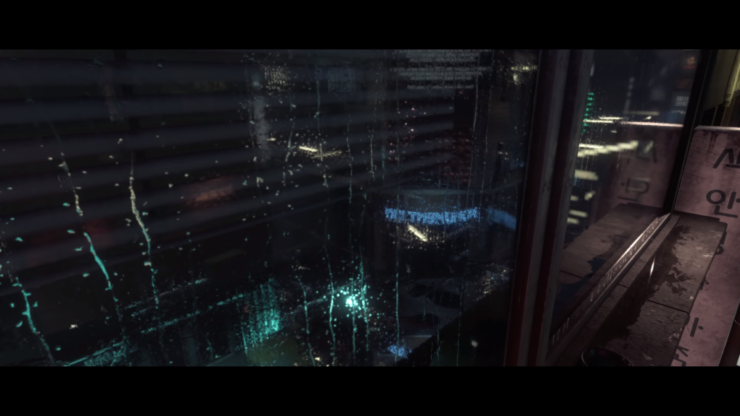 While some GPUs can run games at 4K resolutions with ray tracing enabled, the frame rates are not ideal. So, if you’re planning to buy an RT-enabled GPU, it’s better to game at 1080p or 1440p resolutions for an ideal mix of performance and quality.
While some GPUs can run games at 4K resolutions with ray tracing enabled, the frame rates are not ideal. So, if you’re planning to buy an RT-enabled GPU, it’s better to game at 1080p or 1440p resolutions for an ideal mix of performance and quality.
Related: Which Display Resolution Is Best for Gaming?
Regarding the overall performance and FPS in video games, NVIDIA’s flagship cards, the GeForce RTX 3090, the GeForce RTX 3080 Ti, and the GeForce RTX 3080, emerge as clear leaders. The next best performing cards are the AMD Radeon RX 6900 XT and the RX 6800 XT.
The games used in the benchmarks are Bright Memory Infinite, Control, Cyberpunk 2077, Dirt 5, Fortnite, Godfall, Metro Exodus, Minecraft, Shadow of the Tomb Raider, and Watch Dogs Legion.
Ray Tracing Performance at 1080p
Most mid-range RT-supported GPUs can barely manage 60 FPS with maxed-out settings, and ray tracing enabled in popular video games. However, high-end GPUs, namely the RTX 3090, the RTX 3080, and the RX 6900XT, manage an average FPS of more than 60.
Things look even bleaker for AMD when talking about games that support DLSS. All AMD GPUs trail behind in this scenario. In fact, the RX 6900 XT even falls behind the NVIDIA RTX 2080 Ti, highlighting the importance of DLSS in NVIDIA’s ray tracing implementation.
AMD GPUs Support Ray Tracing, But Fall Behind NVIDIA
All in all, while AMD has a lineup of GPUs that support ray tracing, they lag behind NVIDIA in implementation and performance. However, AMD will likely catch up to NVIDIA soon when its second generation of ray tracing enabled GPUs launches.
AMD could go NVIDIA’s route and have dedicated RT cores that handle ray tracing. But what the brand needs to work most on is its software suite and offer a killer ray tracing feature that can stand shoulder to shoulder with NVIDIA DLSS.
AMD vs Nvidia: Which GPUs Are Best for Ray Tracing?
(Image credit: Tom’s Hardware)
The best graphics cards should let you play your favorite games with stunning visual effects, including life-like reflections and shadows.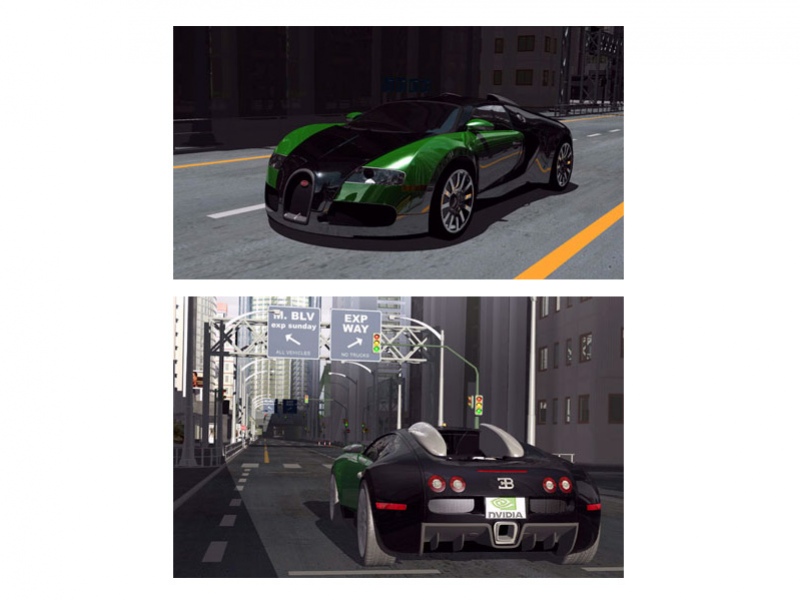 Sure, ray tracing may not radically improve the look of some games, but you should be the one to decide whether or not to enable it. Getting locked out just because it doesn’t run well is no fun. But which graphics cards perform best in ray tracing, and what sort of performance should you expect from Nvidia and AMD? To find out, we tested all the ray-tracing capable GPUs from the two major graphics brands.
Sure, ray tracing may not radically improve the look of some games, but you should be the one to decide whether or not to enable it. Getting locked out just because it doesn’t run well is no fun. But which graphics cards perform best in ray tracing, and what sort of performance should you expect from Nvidia and AMD? To find out, we tested all the ray-tracing capable GPUs from the two major graphics brands.
We’ve gathered all of the latest AMD RDNA2 and Nvidia Ampere GPUs into one place and commenced benchmarking. We’ve also included the fastest and slowest Nvidia Turing RTX GPUs from the previous generation, to show the full spectrum of performance. You can see the complete list of GPUs we’ve benchmarked along with specs for our test PC, which uses a Core i9-9900K paired with 32GB of DDR4-3600 memory. All of the graphics cards are reference models from AMD and Nvidia, with the exception of the RTX 3060 12GB — Nvidia doesn’t make a reference card, but the EVGA card we used does run reference clocks.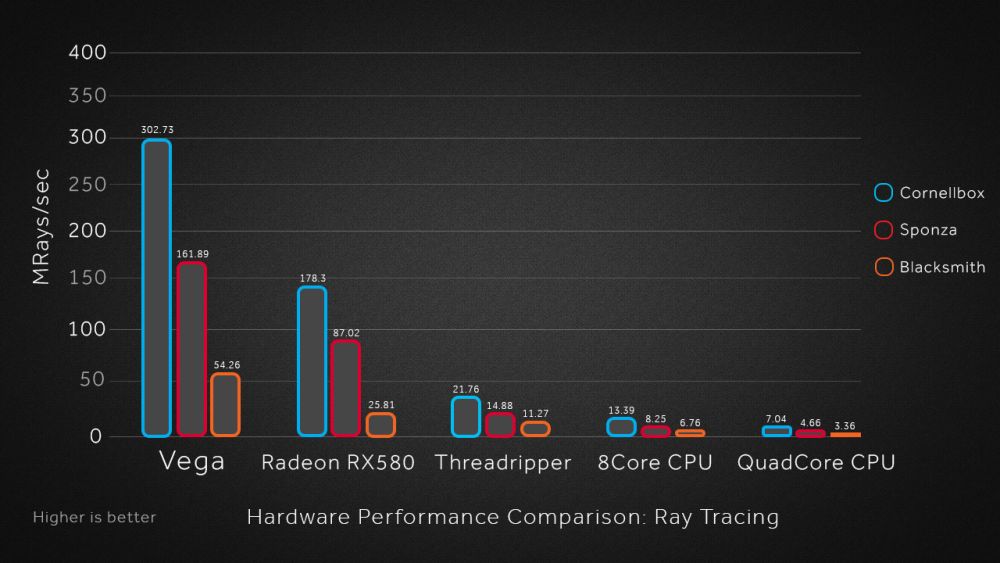
The premise sounds simple enough: Run a bunch of ray tracing benchmarks on all the GPUs. Things aren’t quite so simple, however, as not every ray tracing enabled game will run on every GPU. Most will, but Wolfenstein Youngblood unfortunately uses pre-VulkanRT extensions to the Vulkan API and thus requires an Nvidia RTX card. Maybe the game will get a patch to VulkanRT at some point, but probably not. There are likely other pre-existing games that supported RTX cards back before AMD’s RX 6000 series launched that don’t properly work, but most of the games we’ve tried are now working okay.
We’ve selected ten of the current DirectX Raytracing (DXR) games that work on both AMD and Nvidia GPUs for these ray tracing benchmarks. Given Nvidia’s pole position in the RT hardware world — its RTX 20-series cards launched in the fall of 2018, over two years before AMD’s RX 6000-series parts — it’s no surprise that most DXR games were focused on Nvidia hardware. However, we did select two of the current four AMD-promoted games with DXR, just to see how things might change. Targeted developer optimizations are certainly possible.
Targeted developer optimizations are certainly possible.
The ten games are: Bright Memory Infinite, Control, Cyberpunk 2077, Dirt 5, Fortnite, Godfall, Metro Exodus, Minecraft, Shadow of the Tomb Raider, and Watch Dogs Legion. Dirt 5 and Godfall are the AMD-promoted games, while most of the others are Nvidia-promoted, the exception being Bright Memory Infinite — it’s currently a standalone benchmark of the upcoming expanded version of Bright Memory. We’ve tested at ‘reasonable’ quality levels for ray tracing, which mostly means maxed out settings, though we did step down a notch or two in Cyberpunk 2077 and Fortnite.
Besides DXR, eight of the games also support Nvidia’s DLSS (Deep Learning Super Sampling) technology, which uses an AI trained network to upscale and anti-alias frames in order to boost performance while delivering similar image quality. DLSS has proven to be a critical factor in Nvidia’s ray tracing push, as rendering at a lower resolution and then upscaling can result in far better framerates. Metro Exodus and Shadow of the Tomb Raider currently use DLSS 1.0, which wasn’t quite as nice looking and had some other oddities (Metro is slated to get a DLSS 2.0 update in the near future), so we’ve confined our DLSS testing to the six remaining games that implement DLSS 2.0/2.1, and we’ve tested all of these with DLSS in Quality mode — the best image quality mode with 2X resolution upscaling, which tends to result in similar image fidelity as native rendering with temporal AA.
DLSS has proven to be a critical factor in Nvidia’s ray tracing push, as rendering at a lower resolution and then upscaling can result in far better framerates. Metro Exodus and Shadow of the Tomb Raider currently use DLSS 1.0, which wasn’t quite as nice looking and had some other oddities (Metro is slated to get a DLSS 2.0 update in the near future), so we’ve confined our DLSS testing to the six remaining games that implement DLSS 2.0/2.1, and we’ve tested all of these with DLSS in Quality mode — the best image quality mode with 2X resolution upscaling, which tends to result in similar image fidelity as native rendering with temporal AA.
Because ray tracing tends to be extremely demanding, we’ve opted to stick with testing at only 1080p and 1440p. Nvidia’s cards may be able to manage playable framerates at 4K with DLSS in some cases, but most of the cards simply aren’t cut out to handle games at 4K native with DXR. We’ll start with the native benchmarks at each resolution and then move on to DLSS 2.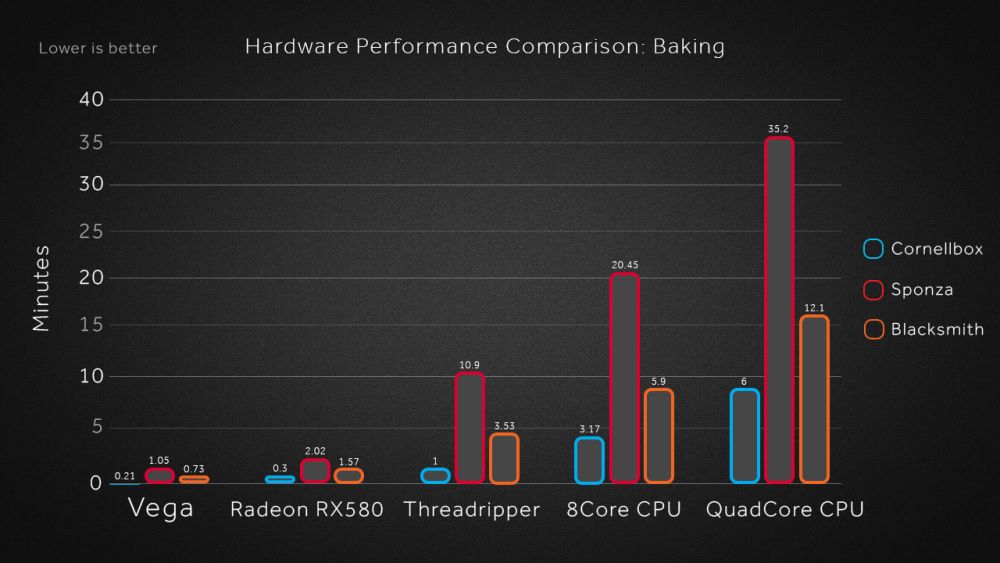 0 Quality testing.
0 Quality testing.
Ray Tracing Benchmarks at 1080p
Image 1 of 11
(Image credit: Tom’s Hardware)(Image credit: Tom’s Hardware)(Image credit: Tom’s Hardware)(Image credit: Tom’s Hardware)(Image credit: Tom’s Hardware)(Image credit: Tom’s Hardware)(Image credit: Tom’s Hardware)(Image credit: Tom’s Hardware)(Image credit: Tom’s Hardware)(Image credit: Tom’s Hardware)(Image credit: Tom’s Hardware)
Running 1080p ultra with DXR enabled already pushes several of the cards well below a steady 60 fps. Only the RTX 3060 Ti (which is about the same performance as an RTX 2080 Super) and the RX 6800 and above average more than 60 fps across our test suite. Even then, there are games where performance dips well below that mark.
Fortnite ends up as the most demanding ray tracing game right now, followed closely by Cyberpunk 2077 and Bright Memory Infinite. All of those use DXR for multiple effects, including shadows, lighting, reflections, and more, which is why they’re so demanding. Control and Minecraft also use plenty of ray tracing effects, and Minecraft actually implements what Nvidia calls «full path tracing» — the simple block graphics make it easier to do more ray tracing calculations.
Control and Minecraft also use plenty of ray tracing effects, and Minecraft actually implements what Nvidia calls «full path tracing» — the simple block graphics make it easier to do more ray tracing calculations.
Most of the games that only implement one ray tracing effect — Dirt 5, Godfall, and Shadow of the Tomb Raider only use RT for shadows, while Metro uses it for global illumination and Watch Dogs Legion uses it for reflections — perform better, though the RTX 2060 still struggles to hit 30 fps in several games. Godfall is an interesting case as well, as not only is it AMD promoted, but it appears to use more VRAM, which can tank performance on cards with less than 12GB VRAM at times.
Overall, the 3090 and 3080 take top honors, followed by the RX 6900 XT and RX 6800 XT. The RTX 2080 Ti and RTX 3070 are effectively tied, as are the RX 6800 and RTX 3060 Ti, with the RX 6700 XT and RTX 3060 12GB also landing close together.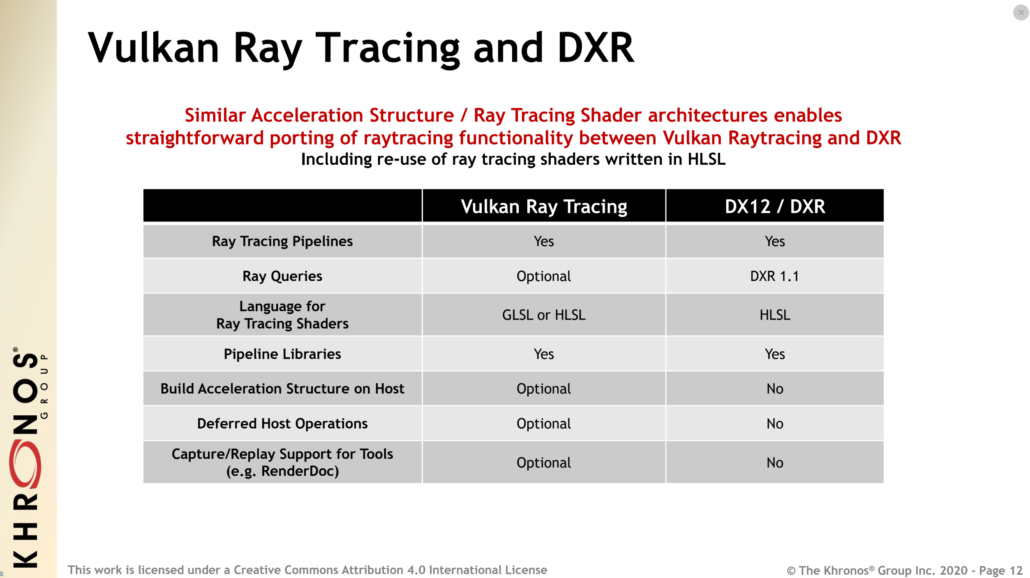 Only the RTX 2060 really falls off the pace set by the other cards. Without the two AMD-promoted games, the RX 6900 XT would have ended up closer to the RTX 3070, though it’s still interesting to see how performance varies by game — AMD’s GPUs did reasonably well in Dirt 5, Fortnite, Godfall, Metro Exodus, and Shadow of the Tomb Raider.
Only the RTX 2060 really falls off the pace set by the other cards. Without the two AMD-promoted games, the RX 6900 XT would have ended up closer to the RTX 3070, though it’s still interesting to see how performance varies by game — AMD’s GPUs did reasonably well in Dirt 5, Fortnite, Godfall, Metro Exodus, and Shadow of the Tomb Raider.
Image 1 of 7
(Image credit: Tom’s Hardware)(Image credit: Tom’s Hardware)(Image credit: Tom’s Hardware)(Image credit: Tom’s Hardware)(Image credit: Tom’s Hardware)(Image credit: Tom’s Hardware)(Image credit: Tom’s Hardware)
As you’d expect, enabling DLSS 2x upscaling via the Quality mode changes the rankings a lot. By restricting the benchmarks to the six games with DLSS 2.0 support, suddenly AMD’s best only manages to rank at about the same level as the RTX 3060 Ti and RTX 3070 — and that’s before turning on DLSS! With DLSS Quality mode enabled, only the RTX 2060 falls behind AMD’s 6900 XT and 6800 XT in the overall rankings. Of course, as noted earlier, all of these games are inherently more Nvidia-promoted, though the level of promotion varies quite a bit.
Of course, as noted earlier, all of these games are inherently more Nvidia-promoted, though the level of promotion varies quite a bit.
It’s also interesting to see that the RTX 2080 Ti falls a bit further behind the RTX 3070 now. That makes sense, as Ampere’s Tensor cores have up to four times the throughput as the Turing Tensor cores (2X for raw throughput, and another 2X for sparsity). Even with more memory and memory bandwidth, the 2080 Ti is only moderately faster than the RTX 3060 Ti.
Looking at the individual charts, even at 1080p — a resolution that tends to be more CPU limited — there’s still plenty of differentiation between the various GPUs. Enabling DLSS also results in impressive performance improvements even at the top of the product stack with the RTX 3090 and 3080. Cyberpunk 2077 looks to be the most CPU-limited, topping out at just under 80 fps regardless of settings on our test system, and Watch Dogs Legion also appears to encounter a bit of CPU bottlenecking. Both have lots of NPC characters roaming around, which helps explain why they hit the CPU harder.
Both have lots of NPC characters roaming around, which helps explain why they hit the CPU harder.
Bright Memory Infinite and Fortnite end up as the two biggest beneficiaries of DLSS Quality mode. The 3060 Ti with DLSS nearly matches the RTX 3090 at native in BMI, while in Fortnite the 3060 Ti and above with DLSS all beat the 3090 at native. Control also shows some significant performance gains, and even the RTX 2060 manages to clear 60 fps now.
Despite the lack of VRAM, the RTX 2060 with DLSS actually turns in better overall performance than the RX 6700 XT and RX 6800. It may not be significantly faster than the 6800, but that it’s even mentioned in the same breath shows just how much DLSS 2.0 helps, and how badly AMD needs to get its FidelityFX Super Resolution (FSR) into the hands of game developers.
There are now over 30 shipping games with DLSS 2.0 support, and you don’t need to have ray tracing enabled to see performance benefits from DLSS — there are significantly more games with DLSS support than there are games with ray tracing support right now. Sixteen shipping games have DLSS 2.0/2.1 support that don’t utilize ray tracing, for example. Plus, Unreal Engine and Unity both have built-in DLSS 2.0 support, meaning developers using either of those engines can easily enable DLSS in their games.
Sixteen shipping games have DLSS 2.0/2.1 support that don’t utilize ray tracing, for example. Plus, Unreal Engine and Unity both have built-in DLSS 2.0 support, meaning developers using either of those engines can easily enable DLSS in their games.
Ray Tracing Benchmarks at 1440p
Image 1 of 11
(Image credit: Tom’s Hardware)(Image credit: Tom’s Hardware)(Image credit: Tom’s Hardware)(Image credit: Tom’s Hardware)(Image credit: Tom’s Hardware)(Image credit: Tom’s Hardware)(Image credit: Tom’s Hardware)(Image credit: Tom’s Hardware)(Image credit: Tom’s Hardware)(Image credit: Tom’s Hardware)(Image credit: Tom’s Hardware)
Bumping the resolution up to 1440p doesn’t change the overall rankings at all at native resolution, though the margin of victory does increase quite a bit in some cases. The RTX 3080 and 3090 are the main beneficiaries of the higher resolution, while the RTX 2060 takes a pretty hard hit to performance — it’s the only GPU that couldn’t average 30 fps or more across our test suite.
Not surprisingly, multiple games do fall below 30 fps on multiple GPUs at 1440p. Only the 3080 and 3090 break 30 fps in Bright Memory Infinite and Cyberpunk 2077, and only the 3090 manages to do so in Fortnite. Godfall meanwhile clearly punishes the 2060’s lack of VRAM, where it’s about one third the performance of the RTX 3060. Several GPUs also struggled in Control, Minecraft, and Watch Dogs Legion.
It should be pretty obvious that, of the potential ray tracing effects, reflections tend to be the most demanding, with shadows being the least demanding. Not coincidentally, RT reflections often have the most noticeable effect on image fidelity. Ray traced shadows can be nice, but the various shadow mapping techniques have gotten quite good at ‘faking’ it.
Image 1 of 7
(Image credit: Tom’s Hardware)(Image credit: Tom’s Hardware)(Image credit: Tom’s Hardware)(Image credit: Tom’s Hardware)(Image credit: Tom’s Hardware)(Image credit: Tom’s Hardware)(Image credit: Tom’s Hardware)
Where DLSS was a potential nice extra at 1080p, it’s almost required to get good performance on most GPUs at 1440p. Without DLSS, none of the GPUs we tested can break 60 fps in the overall average performance chart, but with DLSS even the RTX 3070 (barely) gets there. Memory bandwidth clearly becomes a differentiating factor as well, with the 3080 and 3090 really pulling ahead in the most demanding titles — which is actually all six games in our DLSS test suite.
Without DLSS, none of the GPUs we tested can break 60 fps in the overall average performance chart, but with DLSS even the RTX 3070 (barely) gets there. Memory bandwidth clearly becomes a differentiating factor as well, with the 3080 and 3090 really pulling ahead in the most demanding titles — which is actually all six games in our DLSS test suite.
Again, Nvidia dominates the performance charts once DLSS Quality mode gets turned on. Only the RTX 2060 fails to beat the RX 6900 XT in our overall results, and it’s basically tied with the RX 6800 XT. That applies to the individual results as well, though the RX 6900 XT does tie the RTX 3060 in Fortnite. In Minecraft, meanwhile, even the RTX 2060 comes out ahead of the RX 6900 XT — along with the non-DLSS 3070 and below.
There’s only so much DLSS can accomplish, of course. Bright Memory Infinite, Cyberpunk 2077, Fortnite, and Watch Dogs Legion still fail to break 30 fps with the RTX 2060. That’s probably the main reason why we’re not seeing an RTX 3060 6GB card — though it exists on laptops and may eventually show up on desktops. (Sigh.) If you care about image quality enough to want ray tracing, you’d be well advised to get a card with more VRAM rather than less. It’s too bad that Nvidia’s cards (outside of the 3060 and 3090) generally aren’t as generous with VRAM as AMD’s cards.
That’s probably the main reason why we’re not seeing an RTX 3060 6GB card — though it exists on laptops and may eventually show up on desktops. (Sigh.) If you care about image quality enough to want ray tracing, you’d be well advised to get a card with more VRAM rather than less. It’s too bad that Nvidia’s cards (outside of the 3060 and 3090) generally aren’t as generous with VRAM as AMD’s cards.
Ray Tracing Winner: Nvidia, by a lot
(Image credit: Tom’s Hardware)
Considering Nvidia was the first company to begin shipping ray tracing capable GPUs, over two years ago, it’s not too surprising that it comes out ahead in the ray tracing benchmarks. Technologies like DLSS prove Nvidia wasn’t just whipping something up as quickly as possible, either. It knew how demanding ray tracing would be, and looked at how movie studios were optimizing performance for inspiration. Denoising of path traced images, which is at least somewhat similar to upscaling via DLSS, can dramatically improve performance.
Today, Nvidia has second-generation ray tracing hardware and third-generation Tensor cores in the RTX 30-series GPUs. AMD meanwhile has first-generation ray accelerators, and no direct equivalent of Nvidia’s Tensor cores or DLSS. Perhaps AMD’s FSR will eventually show up and prove that the Tensor cores aren’t strictly necessary, but after nearly six months since first hearing about FidelityFX Super Resolution, we’re becoming increasingly skeptical.
As it stands now, even without DLSS, Nvidia clearly leads in the majority of games that use DirectX Raytracing. Look at our rasterization-only GPU benchmarks and you’ll find the RX 6900 XT and RX 6800 XT in spots two and three, with the RX 6800 in fifth place. With DXR, the 3080 goes from being just barely behind the 6800 XT to leading by over 30%. The same goes for the RTX 3070 and RX 6800: Without DXR, the 6800 is about 12% faster than the 3070; with DXR, the 3070 turns the tables and leads by 15%.
Turn on DLSS Quality mode and things go from bad to worse for Team Red.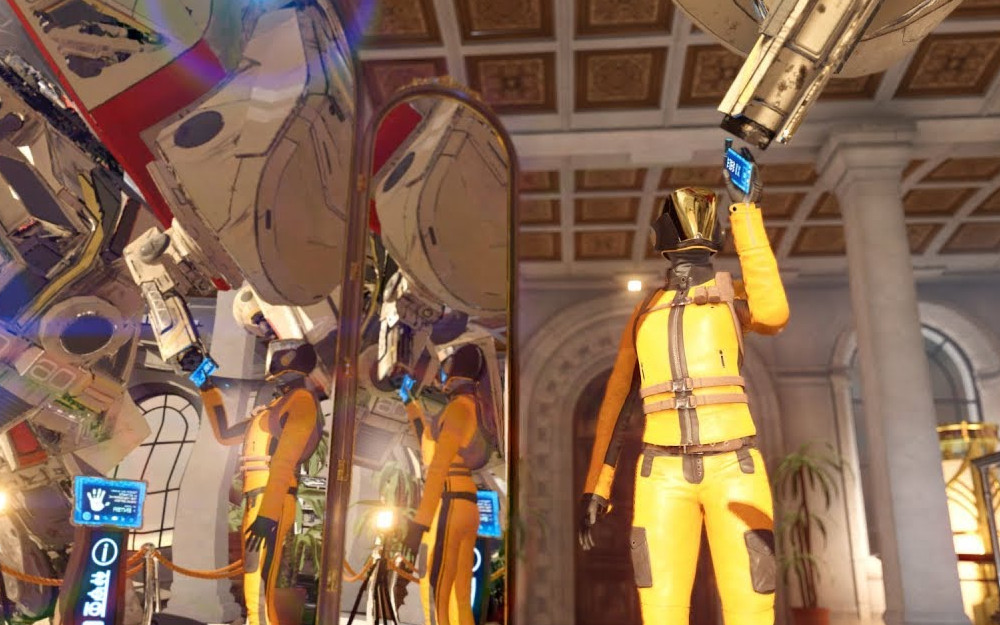 The RTX 3080 more than doubles the performance of the RX 6900 XT, never mind the 6800 XT. The RTX 3070 also more than doubles the performance of the RX 6800. Heck, even the RTX 3060 12GB beats the 6900 XT by 16% at 1080p and 23% at 1440p. Bottom line: AMD needs FSR, and it really should have had a working solution before the RDNA2 GPUs and consoles even launched. Better late than never, hopefully.
The RTX 3080 more than doubles the performance of the RX 6900 XT, never mind the 6800 XT. The RTX 3070 also more than doubles the performance of the RX 6800. Heck, even the RTX 3060 12GB beats the 6900 XT by 16% at 1080p and 23% at 1440p. Bottom line: AMD needs FSR, and it really should have had a working solution before the RDNA2 GPUs and consoles even launched. Better late than never, hopefully.
Of course there’s still a bigger question of how much ray tracing really benefits the player in most games. The best ray tracing games like Control, Cyberpunk 2077, Fortnite, and Minecraft show substantial visual improvements with ray tracing, to the point where we’d much rather have it on than off. (Okay, not in Fortnite where fps matters more than visuals, though it can be nice in creative mode.) But for each of those games, there are at least five other games where ray tracing merely tanks performance without a major visual benefit.
It took half a decade or more for programmable shaders to really make a difference in the way games looked, and games of the future will eventually reach that point with ray tracing.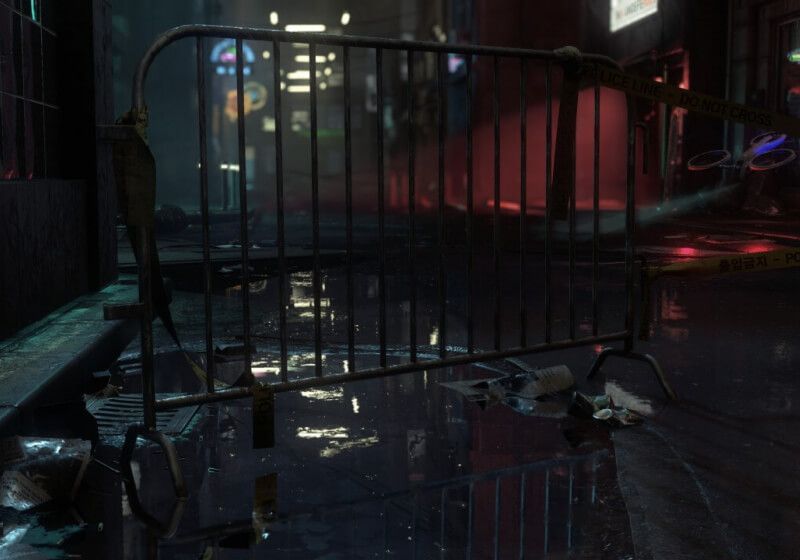 But we’re not there yet. Bottom line: Nvidia reigns as the king of ray tracing GPUs for games. Now we just need more games where the visual benefits are worth the performance hit.
But we’re not there yet. Bottom line: Nvidia reigns as the king of ray tracing GPUs for games. Now we just need more games where the visual benefits are worth the performance hit.
Jarred Walton is a senior editor at Tom’s Hardware focusing on everything GPU. He has been working as a tech journalist since 2004, writing for AnandTech, Maximum PC, and PC Gamer. From the first S3 Virge ‘3D decelerators’ to today’s GPUs, Jarred keeps up with all the latest graphics trends and is the one to ask about game performance.
RTX Remix | The best platform for modding
-
Section
-
Section
I am (check one)
Modder / content writer
Developer
Gamer
Last name
Email address
Country
Location Afghanistan Albania Algeria American Samoa Andorra Angola Anguilla Antarctica Antigua & Barbuda Argentina Armenia Aruba Ascension Island Australia Austria Azerbaijan Bahamas Bahrain Bangladesh Barbados Belarus Belgium Belize Benin Bermuda Bhutan Bolivia Bosnia Botswana Bouvet Island Brazil British Indian Ocean Territory British Virgin Islands Brunei Bulgaria Burkina Faso Burundi Cambodia Cameroon Canada Canary Islands Cape Verde Caribbean Netherlands Cayman Islands Central African Republic Ceuta & Melilla Chad Chile China Christmas Island Clipperton Island Cocos (Keeling) Islands Colombia Comoros Congo (DRC) Congo (Republic) Cook Islands Costa Rica Croatia Cuba Curaçao Cyprus Czech Republic Denmark Diego Garcia Djibouti Dominica Dominican Republic East Timor Ecuador Egypt El Salvador Equatorial Guinea Eritrea Estonia Ethiopia European Union Falkland Islands (Islas Malvinas) Faroe Islands Fiji Finl and France French Guiana French Polynesia French Southern Territories Gabon Gambia Georgia Germany Ghana Gibraltar Greece Greenland Grenada Guadeloupe Guam Guatemala Guernsey Guinea Guinea-Bissau Guyana Haiti Heard & McDonald Islands Honduras Hong Kong Hungary Iceland India Indonesia Iran Iraq Ireland Isle of Man Israel Italy Ivory Coast Jamaica Japan Jersey Jordan Kazakhstan Kenya Kiribati Kosovo Kuwait Kyrgyzstan Laos Latvia Lebanon Lesotho Liberia Libya Liechtenstein Lithuania Luxembourg Macau Macedonia (FYROM) Madagascar Malawi Malaysia Maldives Mali Malta Marshall Islands Martinique Mauritania Mauritius Mayotte Mexico Micronesia Moldova Monaco Mongolia Montenegro Montserrat Morocco Mozambique Myanmar Namibia Nauru Nepal Netherlands Antilles New Caledonia New Zealand Nicaragua Niger Nigeria Niue Norfolk Island North Korea Northern Mariana Islands Norway Oman Outlying Oceania P akistan Palau Palestine Panama Papua New Guinea Paraguay Peru Philippines Pitcairn Islands Poland Portugal Puerto Rico Qatar Romania Russia Rwanda Réunion Samoa San Marino Saudi Arabia Senegal Serbia Seychelles Sierra Leone Singapore Sint Maarten Slovakia Slovenia Solomon Islands Somalia South Africa South Georgia & South Sandwich Islands South Korea South Sudan Spain Sri Lanka Barthelemy St.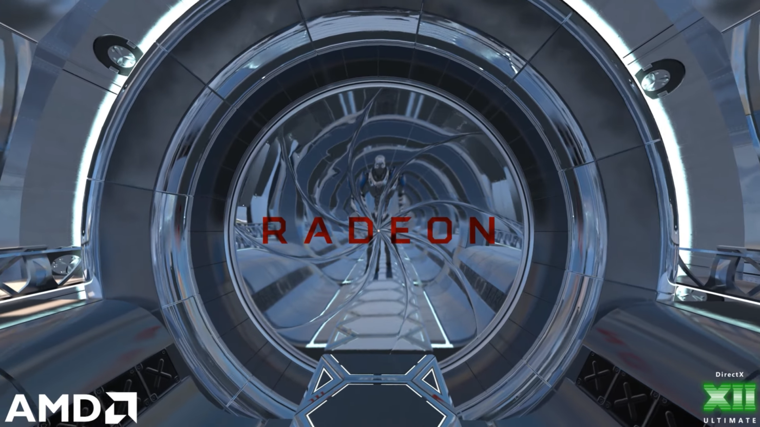 Helena St. Kitts & Nevis St. Lucia St. Martin St. Pierre & Miquelon St. Vincent & Grenadines Sudan Suriname Svalbard & Jan Mayen Swaziland Sweden Switzerland Syria São Tomé & Príncipe Taiwan Tajikistan Tanzania Thailand Togo Tokelau Tonga Trinidad & Tobago Tristan da Cunha Tunisia Turkey Turkmenistan Turks & Caicos Islands Tuvalu U.S. Outlying Islands U.S. Virgin Islands Uganda Ukraine United Arab Emirates United Kingdom United States Uruguay Uzbekistan Vanuatu Vatican City Venezuela Vietnam Wallis & Futuna Western Sahara Yemen Zambia Zimbabwe Åland Islands
Helena St. Kitts & Nevis St. Lucia St. Martin St. Pierre & Miquelon St. Vincent & Grenadines Sudan Suriname Svalbard & Jan Mayen Swaziland Sweden Switzerland Syria São Tomé & Príncipe Taiwan Tajikistan Tanzania Thailand Togo Tokelau Tonga Trinidad & Tobago Tristan da Cunha Tunisia Turkey Turkmenistan Turks & Caicos Islands Tuvalu U.S. Outlying Islands U.S. Virgin Islands Uganda Ukraine United Arab Emirates United Kingdom United States Uruguay Uzbekistan Vanuatu Vatican City Venezuela Vietnam Wallis & Futuna Western Sahara Yemen Zambia Zimbabwe Åland Islands
Preferred language
Preferred Language Chinese (Simplified) Chinese (Traditional) Czech Danish Dutch English (Australia) English (GB) English (India) English (Malaysia) English (Philippines) English (Singapore) English (US) Finnish French French (Belgium) German German ( Austria) Indonesian Italian Japanese Korean Netherlands (Belgium) Norwegian Polish Portuguese (Brazil) Russian Spanish (Latin America) Spanish (Spain) Swedish Thai Turkish Vietnamese
consumerOptIns hidden field
I would like to receive the NVIDIA gaming and entertainment newsletter. I can unsubscribe at any time.
I can unsubscribe at any time.
nvid hidden field
本人 知悉且 同意 nvidia corporation 基于 、 活动 组织 的 目的 本人 的 上述 信息 收集 和 处理 , 已经 阅读 并 并 同意 NVIDIA 隐私政策。
本人 知悉且 同意 , 因 调研 、 组织 的 , 以及 相 对应 nvidia 内部 和 系统 操作 需要 , 上述 信息 会 被 到 美国 的 nvidia corporation 按照 符合 NVIDIA [email protected]
Play Portal With RTX | NVIDIA
Update using ray tracing and DLSS
Steam Wishlist
Free DLC for Portal™ owners
Coming this November
Re-immerse yourself in the critically acclaimed and award-winning Portal™, remastered with ray tracing, revolutionary AI-accelerated NVIDIA DLSS 3 performance, and optimal responsiveness with NVIDIA Reflex. Think portals, with RTX.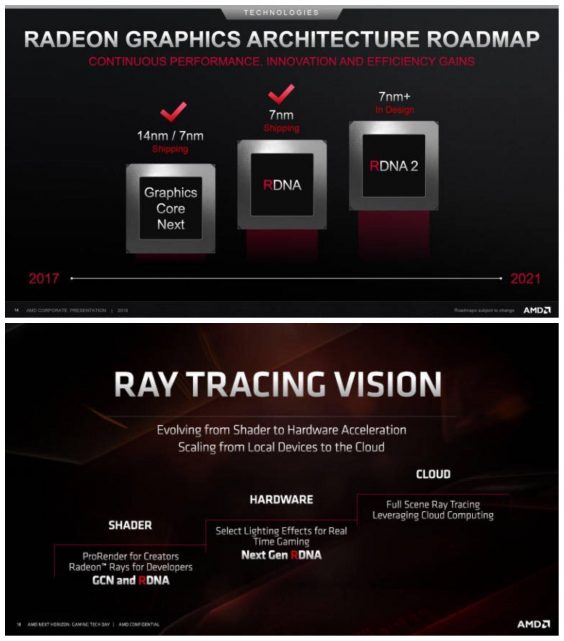
Check out Portal with RTX.
Feel the difference as you solve immersive puzzles in Portal with immersive ray tracing RTX and unrivaled DLSS 3 performance.
Ray tracing support.
In Portal with RTX, ray tracing will breathe new life into Aperture Laboratories, providing the most realistic and accurate lighting simulation possible. Immerse yourself in this innovative game with a completely new experience: real lighting touches every corner, reflections are created on completely new materials, rays of light penetrate through open portals.
NVIDIA DLSS3
Improving productivity with AI.
DLSS technology is a real revolution in AI-based graphics that dramatically improves performance. Relying on the new 4th generation Tensor Cores and the Optical Flow Accelerator in GeForce RTX® 40 GPUs, DLSS 3 uses artificial intelligence to create additional high-quality frames.
